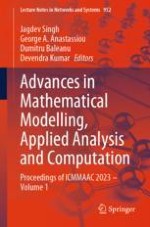This book gathers selected research articles presented in the “6th International Conference on Mathematical Modelling, Applied Analysis and Computation (ICMMAAC)”, held at JECRC University, Jaipur, during August 3–5, 2023. This book is focused on articles dealing with necessary theory and techniques in a balanced manner, and contributes towards solving mathematical problems arising in physics, engineering, chemistry, biological systems, medicine, networking system, control systems, environmental sciences, social issues of current interest and more. Annually held since 2018, the ICMMAAC conference aimed, in particular, to foster cooperation among practitioners and theoreticians in these fields. This proceedings is an invaluable resource for researchers, academicians and professionals associated or interested in current advances in different aspects of mathematical modelling, computational algorithms and analysis necessary for handling real-world problems.
